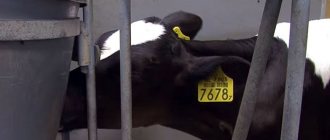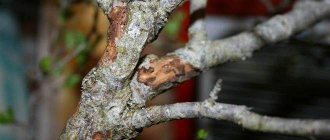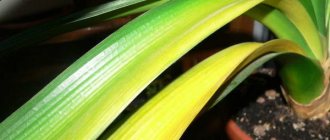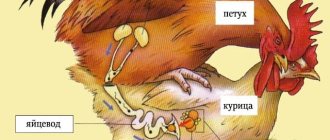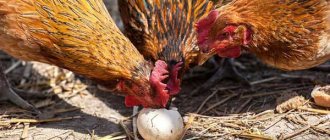Salpingitis
Why do chickens lay small eggs (reason and what to do)
Salpingitis in laying hens is a very dangerous disease. It causes the chicken to stop laying eggs. If the disease is started, the bird will die and infect the rest of the flock.
Salpingitis is an inflammation of the oviduct, the development of which is facilitated by:
- Keeping chickens in cages. This is a common problem in large poultry farms.
- Ingestion of streptococci and staphylococci into the chicken's body. When the cloaca prolapses, pathogenic microorganisms enter the body and cause inflammation.
- Lack of vitamins in poultry nutrition, excess protein. With monotonous feeding of only grain crops and the absence of greens in the diet, the bird does not receive additional calcium, vitamins A, B, E.
- Excess fat in food. The introduction of large amounts of fatty foods promotes the early onset of egg production. In this case, the genital organs of the young chicken do not have time to form correctly.
- Injury, fall from a great height. In this case, the integrity of the oviduct may be compromised.
- The egg of a young individual is too large. It cannot come out safely, stays in the canal for a long time and causes inflammation and rupture.
- Complication of oviduct prolapse.
- There is too much light in the day. This factor also contributes to the early egg production of an immature individual.
A chicken with salpingitis stops laying eggs or lays eggs without shells (or irregular shapes). She begins to experience increased deposition of adipose tissue. The individual behaves atypically, lethargically, she has no appetite, her stomach swells, and diarrhea begins.
It is not practical to treat the disease on large poultry farms. Sick birds are removed and the diet of the livestock is adjusted.
In a small backyard, where every hen counts, the following measures are taken:
- The sick individual is isolated. If her oviduct has fallen out, it is set in the manner described above.
- The chicken is treated with an antimicrobial agent (for example, Baytril).
- Replace grain with professional compound feed or protein-vitamin-mineral concentrate (PVMC). You can prepare the mixture yourself, taking into account all the poultry’s needs for protein, vitamins, fats, minerals and carbohydrates.
Important! The meat of a chicken that has died from salpingitis should not be eaten under any circumstances.
Description of the disease
The pathology is expressed in inflammation of the chicken's oviduct.
The main causative agent of the disease is the bacterium staphylococcus, which disrupts the microflora of the poultry oviduct. The disease mainly affects young laying hens due to the underdevelopment of the oviductal tract.
With prolonged salpingitis, the number of eggs laid by the sick chicken decreases. Egg laying may stop completely. Advanced pathology can cause death in affected birds.
Signs of pathology
There is a list of signs by which one can assume that a chicken’s oviduct is inflamed.
Rapid weight gain: An increase in the weight of a chicken is proof that it is not laying eggs due to health problems. Metabolic disorders lead to increased fat deposition. Laboratory tests confirm an increase in cholesterol levels in birds, the accumulation of which causes obesity.
Additional symptoms:
- a decrease in the number of eggs laid per day; in advanced situations, the chicken stops laying eggs altogether;
- protrusion of the oviduct, which leads to its prolapse;
- loss of appetite;
- frequent diarrhea;
- deterioration of the chicken's condition.
In severe cases, a cheesy discharge forms on the chicken's cloaca due to regular diarrhea and the ingress of pathogenic microorganisms that worsen the course of the disease. At this stage, veterinarians advise slaughtering the bird, since it is no longer possible to completely cure it.
Forms of salpingitis
The disease can occur in two forms: chronic or acute. The final diagnosis is made after observing the chickens and receiving test results.
Symptoms of acute salpingitis:
- a sharp decline in the number of eggs laid during the first day of development of the pathology;
- fatigue, apathy and poor appearance of the chicken;
- a sharp rise in body temperature by 2 degrees;
- blue scallop;
- enlarged abdomen, pain when touched.
The chronic form of chicken salpingitis does not have pronounced symptoms. The bird's behavior changes, the regularity of egg laying is disrupted, appetite decreases, and liquid feces appear. The presence of this form of pathology is confirmed by laboratory tests.
Causes of oviduct prolapse
The chicken has a large crop: what to do?
A chicken's oviduct is a duct that is designed to remove mature eggs from the ovaries. In all birds, only the left ovary and left oviduct are developed, while the right ovary and oviduct are not developed. The upper end of the left oviduct enters the ovarian cavity, and the posterior thickened end flows into the cloaca. The cloaca is the opening that ends the rectum and oviduct.
The main reason why a chicken's oviduct falls out is inflammation of the egg-producing organs. It can develop due to the launch of young individuals into oviposition too early. This happens when farmers speed up the process of egg formation in young animals by increasing daylight hours - artificial lighting is provided almost around the clock, or they start feeding chickens with too fatty foods. As a result, birds that have not yet matured biologically begin to lay eggs. Oviduct prolapse can also be caused by an incorrectly formed or too large egg. Excessive egg production can also lead to organ prolapse.
Excessive egg production can lead to oviduct prolapse
The first symptoms are that the hen finds it difficult to lay eggs. The back of the oviduct swells and exits into the cloaca. Constipation or diarrhea may begin, causing the feathers around the cloaca to become dirty with discharge.
In advanced cases, the oviduct is clogged with cheesy masses. At this stage, it is almost impossible to cure the bird. Veterinarians advise slaughtering a chicken with such symptoms.
Treatment for cloacal prolapse in laying hens:
- rinse the protruding part with warm water and a 2% tannin solution;
- treat hands with a disinfectant solution;
- Lubricate your finger and oviduct with Vaseline;
- carefully push the organ inward.
Sometimes this procedure is successful, and the problem does not return. When cloacal prolapse occurs in chickens, susceptibility to pathogenic microorganisms increases, so treatment should not be delayed. If the loss recurs, the bird is taken to a veterinarian to determine the cause. To do this, you will need to take blood for analysis, and the type of pathogen will be determined in the laboratory. After this, a course of antibacterial therapy may be prescribed. In some cases, the doctor will advise not to delay and slaughter the bird in order to prevent infection of the entire flock.
A course of antibacterial therapy for chickens
Diseases due to malnutrition
In winter, the problem of malnutrition is more acute than ever. Chickens are deprived of free access to fresh greens and are forced to settle for feed or grain mixtures. The situation is worsened by a lack of sunlight, which is necessary for the production of vitamin D and the absorption of calcium.
Avitaminosis
This disease is directly related to the diet of chickens. The main symptoms include lethargy, lethargy, weight loss, leg weakness, and diarrhea. Chickens' combs and earrings turn pale, their joints become swollen, and in extreme cases, blindness develops. They lower their wings and often squat. Laying hens begin to lay fewer eggs and appear emaciated.
As a treatment, it is necessary to add the required amount of vitamins and minerals to the chickens' diet. It is useful to add grated zucchini or pumpkin, grass flour or hay, cake, fermented milk waste (whey), bran, brewer's yeast to their diet. Don't forget about shell rock and chalk. It wouldn’t hurt to give your chickens complex vitamins.
Gastroenteritis
The cause of this disease is poor quality food, as well as the lack of fresh greens in the diet. The mucous membrane of both the stomach and intestines is affected. The main symptom of the disease is diarrhea. In addition, the chicken becomes lethargic and depressed and takes on a disheveled appearance. The egg production of laying hens deteriorates and the bird refuses food.
Before starting treatment, infectious diseases should be excluded. The main therapy is the elimination of dietary errors that led to the disease, and taking medications: disinfectant solutions of 0.2% ferrous sulfate or potassium iodide. An infusion of hemp seed helps a lot. To prevent the development of gastroenteritis, it is recommended to include fermented milk, sprouted grains and oatmeal in the diet of chickens in winter. It is necessary to ensure that their diet is varied and necessarily contains grain mixtures.
Salpingitis
As a rule, almost all laying hens are susceptible to this disease. The main reason for its development is a lack of vitamins and improper feeding regimen, which is especially important in winter. The disease is characterized by inflammation of the oviduct, so the first symptom is a decrease in the number of eggs. Chickens may stop laying eggs altogether or produce eggs without shells.
Treatment should begin as early as possible - by injecting 20 ml of Vaseline into the chicken’s cloaca. Next, it is advisable to give several injections of sinestrol (1%) and pituitrin (50 thousand units) and combine them with antibiotics. Therapy for chickens lasts approximately 4 days. As a preventative measure, a balanced, fortified diet is necessary.
Treatment with traditional methods
In order for traditional treatment to have a greater effect, it is necessary to combine it with traditional methods. Typically, traditional methods involve washing the cloaca. To do this, use a weak solution of potassium permanganate or furatsilin.
It is worth remembering that a washed chicken should not be released into the chicken coop immediately. It is best to blot it with a clean, dry cloth, as dirt can stick to a wet feather, which is an even greater source of infection.
In addition to what is described above, it is necessary to give the sick bird fresh herbs and vegetables every day. Zucchini and cucumbers are great.
Definition of disease
The cessation of the process of laying eggs is prolapse and inflammation of the oviduct. Usually, if it falls out, it is visible to the naked eye. When interacting with the environment, the risk of disease and penetration of pathogenic microbes into the oviduct increases.
The disease can be identified by the bird's crest; it turns blue and the body temperature may rise by 2 degrees. To clarify the disease, you need to carefully examine the chicken.
Prolapse of the oviduct (salpingitis) increases mortality in birds. More often the disease manifests itself at a younger age. This is especially true for egg breeds, whose main goal is laying eggs.
The disease can be determined by observing how eggs are laid, as well as by the results of additional studies. The disease occurs in acute and protracted form. Sometimes prolapse of the oviduct occurs without specific symptoms, often this occurs with a chronic course of the disease.
The egg may get stuck during laying and not fall out, or the bird’s canal from where the egg comes out has fallen out. The chicken is not eating well and does not look healthy.
If the chicken:
- the opening of the oviduct is inflamed;
- the stomach has increased;
- walks poorly, this indicates the development of the disease.
Diagnosis of disease in poultry
Diagnosis of the disease is possible by observing birds, analyzing how egg laying occurs and based on the results of the tests obtained. The disease tends to occur in two forms: acute and chronic. In a minority of cases, the disease occurs without pronounced symptoms, which is why certain abnormalities in condition and behavior must be checked through laboratory blood tests. This can mainly occur in the case of a chronic course of the disease.
In the case of acute forms of the disease, the number of eggs produced per day decreases in the bird. Treatment in this case should be carried out immediately when at least one sign is detected.
It happens that the egg is stuck and no prolapse is observed, or in laying hens the channel from which the egg comes out has fallen out. At the same time, the hen stops eating normally and looks depressed. After some time, the bird’s temperature rises by 1 or 2°C, and a little earlier you will notice a change in the color of the scallop: it will turn bluish. It is necessary to determine the disease as accurately as possible; for this it is recommended to carefully examine the bird.
Upon examination, you can pay attention to inflammation of the exit of the oviduct, an enlarged abdomen, due to which the hen moves very poorly, and over time, the ability to walk completely disappears. If appropriate measures are not taken, the disease will progress
You can see the manifestation of the symptoms of the disease in more detail in the photo.
Prevention
To avoid recurrence of the disease, it is important to keep the hens clean and feed the right foods. Since the main purpose of laying hens is to lay good eggs, vitamins should be present in the daily menu:
- iron sulfate,
- manganese,
- zinc,
- copper,
- cobalt chloride,
- potassium iodide
To achieve good results, vitamins and supplements with a high calcium content are added to the food. The main thing is not to overdo it and take the individual productivity indicators of each individual as a basis. It is necessary to ventilate the room (chicken coop) more often and provide the laying hens with constant lighting.
Microelements are used in the production of feed for domesticated birds. Plant and animal foods will not be able to fully provide chickens with the necessary nutrients. Farmers can purchase premixes: “Ryabushka” - for brood hens, “Solnyshko” - for chickens.
List of foods that chickens eat willingly:
- alfalfa grass, clover, green onion, beet tops;
- red carrots, sugar beets, cabbage leaves, yellow pumpkin pulp, boiled potatoes.
- shell rock
- kitchen waste.
- In winter, they eat dry nettles, legume hay, pine and legume flour.
Birds respond well if they lack vitamins in their daily diet. For full development and resistance to diseases, they need to eat more calcium and phosphorus. Table salt should also be present.
For preventive purposes, poultry farmers add iodine and potassium to chickens in the amount of 3 mg per head. You can use chlorine-chlorane, 40 mg for 20 days. Carrying out these measures increases resistance to the emergence of infectious diseases, the immune system is strengthened, and the body is able to attack foreign microorganisms.
Oviduct prolapse is a disease that can kill all poultry. Compliance with prevention will protect chickens from complications and consequences, and will minimize the financial costs of treatment.
Sources
- https://greenologia.ru/eko-zhizn/xozyajstvo/fermerstvo/pticevodstvo/kury/bolezni/salpingit.html
- https://PoFerme.com/ptitsy/kury/bolezny-k/chto-delat-esli-vypal-yajtsevod.html
- https://FermoVed.ru/kuryi/vypadenie-yajcevoda.html
- https://s-ingeneering.ru/3647/
- https://agronomu.com/bok/6979-lechenie-vospalenie-yaycevoda-u-kur.html
- https://selo.guru/ptitsa/bolezni-p/pitanie/salpingit.html
How to help a laying hen?
It is recommended to start treating inflammation and prolapse of the oviduct at home by normalizing the diet of birds. The feed must have an optimal content of vitamins and minerals. The balance of vitamins A, D, E and group B is especially important. Feed yeast, fresh herbs, meat and bone and grass meal help solve the problem.
Specific treatment depends on the causes of inflammation. You need to start by injecting 20 mg into the cloaca. Vaseline to prevent internal ruptures when large eggs pass through. The protruding oviduct is washed with water and then with a two percent solution of tannin or alum. After rinsing, you can try to perform the procedure of repositioning the oviduct inward. The oviduct and finger are lubricated with Vaseline and the organ is inserted into the cloaca.
Often, such manipulations help normalize the bird’s condition, and it continues to lay eggs. If oviduct prolapse occurs again, experts recommend sending the chicken to slaughter.
If it is not possible to straighten the oviduct the first time, you can treat the prolapsed part as follows. For 7-10 days, the oviduct is washed with saline solution (2-4 teaspoons per 250 ml of water). The procedure is carried out twice a day. The same solution can be used to make microenemas. To prevent inflammation, the chicken is given half a tablet of Trichopolum (Metronidazole) and a sixth of Sulfadimezine daily. After such treatment, the oviduct may fall into place on its own or be reduced. After repositioning the oviduct, the hen is given probiotics and vitamins.
Inflammation of the oviduct without prolapse is treated with medication. Laying hens are given intramuscular injections:
- Synesterol – 1% 1 ml for three days.
- Pituitrin – 50 thousand units. twice a day for 4 days.
If inflammation of the oviduct is caused by microorganisms or is a complication of a previous illness, the hen is prescribed a course of antibiotics and sulfonamides:
- Baytril – 2.5% 0.5 ml.
- Gamavit – 1 cu.
- Calcium gluconate – 1 cc.
The drugs are administered over 5-7 days. After treatment for two weeks, the laying hen is given probiotics (Linex 1 ml daily) to normalize the state of the intestinal microflora.
During treatment, it is recommended to separate the laying hen from the rest of the flock. It is advisable to organize the keeping in such a way that the bird sees its relatives. But they had no way to get to her.
conclusions
- The process of laying eggs directly depends on the physiological state of the chicken.
- Oviduct prolapse is associated with improper care and lack of microelements in the daily diet.
- If symptoms occur and infection is suspected, additional tests should be performed.
- Treatment measures include washing the external entrance, microenemas, and feeding birds with tablets.
- Prevention of the disease is associated with proper and proper care, compliance with all recommendations for feeding birds, especially during the period of productivity and in the cold season.
- Sick birds are usually culled, but with timely treatment this can be avoided.
You can read about what breed of chickens to choose for eggs in this material.
Description of the problem
Inflammation of the oviduct in a poultry farm occurs more often than in the home. This is explained by the fact that in large enterprises the risk of developing infections increases.
Keeping chickens in close quarters creates conditions for bacteria to enter their bodies.
Infections contribute to the development of the inflammatory process. At the same time, birds are affected by yolk peritonitis. Causes of oviduct prolapse in chickens:
Inflammation of the oviduct in chickens often develops after its prolapse. The external environment is full of bacteria that affect the organ. They get inside and cause illness.
- decreased productivity;
- eggs that are irregularly shaped or have no shell;
- lethargy, loss of appetite;
- the appearance of mucus, yolk or protein substances from the cloaca;
- diarrhea - feathers become dirty, creating favorable conditions for the development of microorganisms.
It happens that the egg gets stuck; sometimes the very channel along which it moves falls out.
After a certain period, the hen’s body temperature rises, she loses activity, standing with her legs apart. The abdominal wall tenses. In the acute form of the disease, the scallop turns blue.
Consequences
When the oviduct becomes inflamed, productivity decreases; when it falls out, it stops completely. An advanced disease threatens to fill the organ with solid masses of gray-white or yellow color, which have the consistency of cheese. The blockage sometimes completely blocks the passage. In this case, the individual is discarded.
Diagnostics
Only a doctor can determine the disease by the behavior of chickens.
During the examination, he takes the bird in his hands and palpates it. Signs of the disease are an enlarged abdomen and discomfort that the hen experiences when pressed. Swelling in the cloaca area is also visible. When a chicken's oviduct falls out, part of the organ is visible. Walking becomes difficult, the stomach stretches along the ground, and over time the individual stops moving completely.
If the disease is in a chronic stage, the veterinarian will make a diagnosis using a blood test. The procedure makes it possible to determine the cause of the disease.
When a chicken's oviduct falls out, part of the organ is visible.
Treatment of oviduct prolapse in chickens should begin with isolating the sick individual. They do this so that she sees other birds, but they cannot approach her. In the first days, it is provided with vitamin food with a minimum protein content in order to renew the bird’s strength to fight the disease.
When a chicken's oviduct falls out, it is washed with water and a two percent tannin solution. Afterwards they try to insert it into place. This is done with a finger lubricated with Vaseline. If this does not work, perform the following steps:
- prepare a solution - 250 ml of water, 2-4 tsp. salt;
- wash the organ with it 2 times a day;
- daily give 0.5 tablets of the drug "Trichopol" and 1/6 of the drug "Sulfadimezin" to prevent inflammation;
- Then they try again to put the organ back in place.
If the oviduct falls out again, the individual is sent for meat. There is no point in treating her.
When the oviduct becomes inflamed due to infection, the birds are given antibiotics and sulfonamides. The following drugs are used:
- "Baytril" 2.5%, dose - 0.5 ml;
- “Gamavit” – 1 ml;
- calcium gluconate – 1 ml.
The course of treatment is 7 days. Over the course of a week, chickens are given a probiotic to restore intestinal microflora.
If the inflammation is caused by other reasons, and the oviduct has not prolapsed, intramuscular injections are given. It is worth treating with the following substances:
- "Sinestrol" one percent - 1 ml for 3 days;
- "Pituitrin" - 2 times a day for 4 days.
When the egg is stuck, Vaseline is injected into the cloaca. This will make it easier to pass and prevent tears. If such manipulations do not help, they begin to squeeze out. It happens that the shell cracks inside, then it is removed with tweezers, and 20-30 ml of vegetable oil is injected into the organ.
How to help a laying hen?
It is recommended to start treating inflammation and prolapse of the oviduct at home by normalizing the diet of birds. The feed must have an optimal content of vitamins and minerals. The balance of vitamins A, D, E and group B is especially important. Feed yeast, fresh herbs, meat and bone and grass meal help solve the problem.
Specific treatment depends on the causes of inflammation. You need to start by injecting 20 mg into the cloaca. Vaseline to prevent internal ruptures when large eggs pass through. The protruding oviduct is washed with water and then with a two percent solution of tannin or alum. After rinsing, you can try to perform the procedure of repositioning the oviduct inward. The oviduct and finger are lubricated with Vaseline and the organ is inserted into the cloaca.
Often, such manipulations help normalize the bird’s condition, and it continues to lay eggs. If oviduct prolapse occurs again, experts recommend sending the chicken to slaughter.
If it is not possible to straighten the oviduct the first time, you can treat the prolapsed part as follows. For 7-10 days, the oviduct is washed with saline solution (2-4 teaspoons per 250 ml of water). The procedure is carried out twice a day. The same solution can be used to make microenemas. To prevent inflammation, the chicken is given half a tablet of Trichopolum (Metronidazole) and a sixth of Sulfadimezine daily. After such treatment, the oviduct may fall into place on its own or be reduced. After repositioning the oviduct, the hen is given probiotics and vitamins.
Inflammation of the oviduct without prolapse is treated with medication. Laying hens are given intramuscular injections:
- Synesterol – 1% 1 ml for three days.
- Pituitrin – 50 thousand units. twice a day for 4 days.
If inflammation of the oviduct is caused by microorganisms or is a complication of a previous illness, the hen is prescribed a course of antibiotics and sulfonamides:
- Baytril – 2.5% 0.5 ml.
- Gamavit – 1 cu.
- Calcium gluconate – 1 cc.
The drugs are administered over 5-7 days. After treatment for two weeks, the laying hen is given probiotics (Linex 1 ml daily) to normalize the state of the intestinal microflora.
During treatment, it is recommended to separate the laying hen from the rest of the flock. It is advisable to organize the keeping in such a way that the bird sees its relatives. But they had no way to get to her.
Symptoms and signs
Prolapse of the oviduct is accompanied by a number of diseases, namely:
- Ovarit;
- Salpingitis;
- Yolk peritonitis.
Yolk peritonitis is observed in different breeds of laying hens. If ovarian disease develops, the main factor here is the cessation of egg laying with subsequent atrophy of the ovary.
Salpingitis develops quickly and is a more protracted disease. This disease occurs when poultry is improperly cared for and kept in poor conditions. Egg laying in laying hens disappears or continues with long interruptions. Sick birds lay bad eggs, often deformed or without shells, and small in size.
Small eggs are a pathology of oviposition, which means that the chicken’s oviduct is infected and narrowed. This product weighs no more than 35 grams. Such clutches are often found among young animals in spring or summer.
A chicken can lay eggs without a yolk or with a poorly developed yolk (blood, fibrin, and yolk particles are observed in the white), they are round in shape, and the white inside is dense. It happens that with increased work of the oviduct, the yolk does not have time to be covered with protein and a shell is immediately formed. As a result, such eggs contain practically no protein or contain it in small quantities.
Inflammatory diseases of the oviduct disrupt the normal formation of eggs and lead to a sharp decrease in egg production.
When sick, chickens lay soft eggs or without shells. This indicates a lack of vitamin D and minerals in the laying hens’ diet. There are birds that constantly lay soft-shelled eggs. This has nothing to do with salpingitis, it’s just that the process of calcium formation in the body is disrupted, and the anomaly is passed on from generation to generation. The structure of the shell is affected by increased body temperature (reduces the formation of calcium in laying hens by one third).
Inflammatory processes in the oviduct and its prolapse outward are associated with the laying of large eggs (double yolk) or deformed in shape. The phenomenon intensifies with diarrhea in chickens and constipation. When you put the tube back in, it falls back out, even if everything is done correctly.
In prolonged cases, egg laying may stop, the chicken develops anemia, and severe weight loss is observed. Such birds are no longer useful and are discarded.
Diagnosis of the disease
In the acute form of the disease, it can be diagnosed based on observations of the bird. In the case of an acute form, the sick individual will sit in the nest, trying to leave it only in case of emergency; it may eat poorly and even refuse to eat.
The stronger the inflammatory process in the bird’s body, the higher its temperature will be, and the crest on its head will turn blue.
The chronic form of salpignitis in chickens occurs with virtually no pronounced symptoms, except for a decrease in the number of eggs laid. The basis for diagnosis in this case is a blood test.
Also, for an accurate diagnosis, it is necessary to examine the laying hen for an increase in the abdominal area. An enlarged belly will prevent the chicken from walking, and if you start to feel it, it will cause pain to the bird, and it will struggle with all its might.
What is salpingitis
To date, there are no specific sources that give an idea of the origin of such a disease in poultry, but there is an opinion that the disease appeared during the domestication of chickens. The reasons include the environment of the animal, as well as the action of the most dangerous microorganism - staphylococcus, which is very common in the places where chickens live.
Salpingitis is considered a dangerous disease that can cause enormous losses to the farm. The productivity of chickens in terms of egg production depends on this disease. In particularly advanced forms, without treatment by a veterinarian, the disease can cause the death of all chickens, which increases losses for the farmer, since the meat of a deceased chicken is considered unfit for consumption. You can see in more detail what salpingitis looks like in chickens in the photo.
Causes of the disease
When there is prolapse of the oviduct in chickens, let's consider the causes of the disease. There are several factors that increase the risk of organ damage by inflammatory processes. These include:
- Poor nutrition of laying hens. If the feed lacks the required dose of calcium, beneficial vitamins and choline, the laying hen is more likely to develop this disease.
- Quite often, inflammation of the oviduct can develop as a result of an impact, falls from a height, or due to a compromised integrity of the canal. In young laying hens, rupture can occur due to eggs that are too large in size and simply cannot pass painlessly through the canal. Such a large egg can remain inside the oviduct for a long time, which causes ruptures and inflammation of the organ.
- Salpingitis may be caused by a completely different disease and not inflammation of the oviduct. The presence of another infection is likely to lead to inflammation of the organ. Inflammation of the cloaca, for example, often develops into salpingitis.
- Complications in case of prolapsed oviduct. This problem is widespread and widespread among laying hens. This can happen due to deficiencies of vitamins such as D and E in the laying hen’s body, which causes disturbances in the microflora of the affected organ. When the oviduct falls out, it will have to be in the external environment, where you can find a mass of pathogenic microscopic organisms that begin to occupy the organ, subsequently causing its inflammation.

